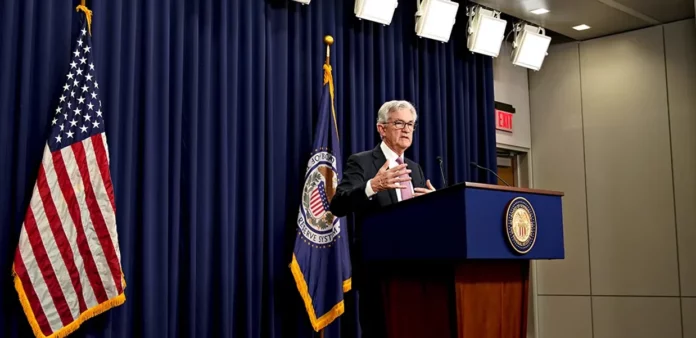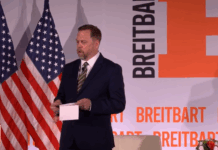Federal Reserve increase in benchmark interest rates by 75 basis points was a sign that policymakers are stepping up their efforts to combat red-hot inflation. This move will slow U.S. growth and increase financial pressure on Americans.
After a series of alarming economic reports, the Fed’s 75-basis point increase, the first since 1994 shows just how serious Fed officials are about addressing the inflation crisis.
This move places the benchmark federal funds rate at 1.50% to 1.755%, which is the highest level since the pandemic started two years ago.
Officials also outlined a path for rate increases in the second half of the year. After the meeting, new economic projections showed that policymakers expected interest rates to reach 3.4% by 2022. This would be the highest level since 2008.
Comparatively, the March estimate revealed that officials had estimated rates reaching 2.5% by the year’s end.
In its post-meeting statement, the Fed stated that inflation remains high, reflecting supply/demand imbalances due to the pandemic, higher oil prices, and wider price pressures.
Stocks rose following the approval of the statement by all FOMC members, except Kansas City President Esther George who requested a smaller half point increase.
Economists expected that the central bank would increase its point rate by 50 basis points at its June meeting. This is twice the usual size, according to economists. In May, policymakers approved a 50-basis rate hike and set out a roadmap to achieve similar increases at their next meetings.
A dismal Labor Department report showed that the consumer price index rose 8.6% last May compared to a year earlier. This was the fastest rate of inflation since December 1981. It shattered economists’ hopes that the inflation spike was beginning to recede. A different survey on Monday revealed that households expect much faster price increases. This is a worrying sign, as Fed officials believe such expectations are possible to be fulfilled.
Jerome Powell, the Fed Chairman, stated that policymakers were seeking evidence that monthly inflation is flattening or beginning to fall during a press conference after the meeting. Officials decided that “strong action was necessary” after consumer prices unexpectedly rose and inflation expectations rising.
Powell indicated that Powell expects a three-quarter-point to half-point increase in July. However, he stressed that officials will take their decisions meeting by meeting.
Now the question is whether the Fed can achieve the soft landing, the sweet spot between tamping demand and cooling inflation without causing a slowdown in the economy. Hiking interest rates can lead to higher rates for consumer and business loans. This slows down the economy and forces employers to reduce spending.
The “dot plot” economic projections show that although policymakers anticipate rate hikes ending in 2023 at a peak 3.8%, they also predict several modest interest rate reductions in 2024. This suggests that the Fed may be anticipating a slowdown in the coming years.
Officials painted a positive picture of the economy, citing “robust job gains” and low unemployment. However, projections show that policymakers have lowered their outlook for gross domestic products in 2022 from 2.8% in March to 1.7%. Officials expect that unemployment will rise slightly to 3.7% in 2018 and 4.1% in 2024, as they increase borrowing costs and crush economic demand.
The Fed chief refuted the idea that central bankers were trying to instigate a recession by arguing that there is no sign of a wider slowdown. He tried to assure Americans that higher interest rates won’t cause a recession, and that tightening policies are necessary to control prices. This was a concern that weighed heavily on the national households.
The post Fed Raises Interest Rate By 75-Basis Points In Historic Move To Fight Inflation appeared first on Conservative Research Group.




